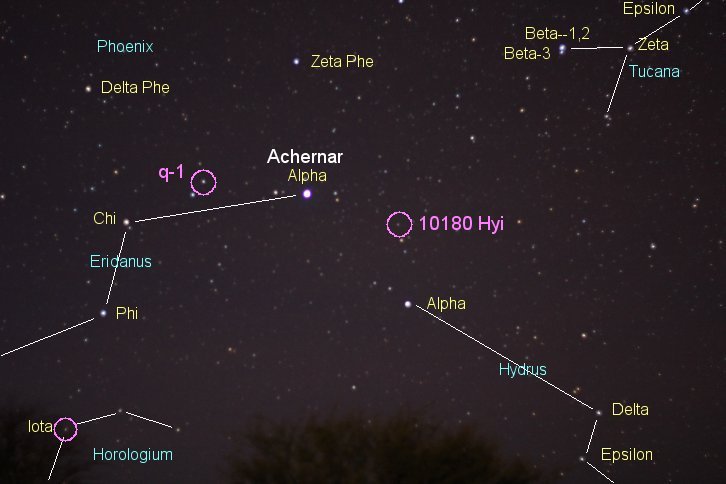 A remarkable Sunlike star, HD 10180 in Hydrus has a record-setting six, perhaps even seven,
planets.
A remarkable Sunlike star, HD 10180 in Hydrus has a record-setting six, perhaps even seven,
planets.
THE PLANETS
The circle shows the location of the class G near-solar star HD 10180, which may be encircled by as many as seven planets, six of which are confirmed, making it a veritable "solar system," though one quite a bit different from ours. In order out from their sun, HD 10180c through h (the star itself HD 10180a) have orbital radii that range from a mere 0.064 Astronomical Units to 0.429 AU for "f," then growing larger to 1.42 AU and 3.4 AU for the last two, HD 10180g and h. The first five of these, c through g, are Neptune-class planets with lower mass limits that run from 0.8 Neptunes for the innermost of them through 1.3-1.5 for the next three (e, f, and g). The outermost, HD 10180h, is more Saturn- like, carrying about a two-thirds the mass of our version. Orbital periods run from 5.76 days for "c" through 123 days for "f," topping out at 1.65 and 6.1 years for "g" and "h," the latter at least a little more familiar.That leaves the innermost planet, HD 10180b, which is unconfirmed. If real, it is remarkable, with a mass of just 1.35 Earths in an extremely tight 1.78-day orbit only 0.022 AU (four stellar radii) from its star: not exactly conducive to life.